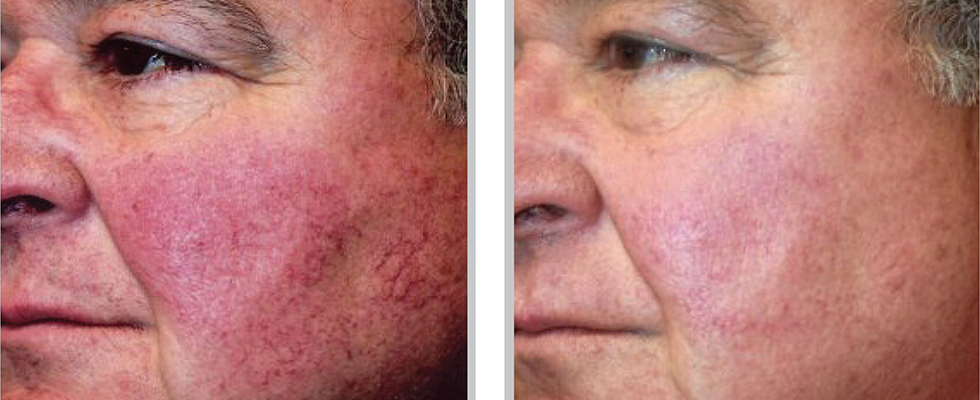Red cheeks or visible blood vessels maybe a result of chronic environmental damage (usually sun), trauma (accidental or surgical), or could be a sign of a medical condition called rosacea. Rosacea is characterized by redness of the face, especially the cheeks and nose. The cause of rosacea is unknown, and it is frequently associated with acne pustules, in a condition called acne rosacea. Sufferers of this condition appear constantly red on the face, with visible broken capillaries.
Rosacea is commonly triggered by stress, hot and spicy foods, alcohol, sunlight etc, and the first step in treatment is to avoid these triggers. It is helpful to wear a SPF 30+ sun block, and to use gentle skincare products, eg. Cetaphil. Topical prescribed treatments include an antibiotic gel or an anti-inflammatory gel. Oral antibiotics have also been used with success, if there is inflammation present. In severe acne rosacea, oral vitamin A has been used, but is associated with significant side effects like dry skin and lips etc.
The modern treatment for rosacea, facial redness and broken capillaries is to use Broadband Light (BBL), with filters selected to shut down the blood vessels causing the redness. A series of 2-6 treatments, about a month apart, can produce significant reduction in redness. This treatment is non-invasive and gentle, with virtually no downtime.
A Medicare rebate of $133.70 may be claimed for BBL treatment of vascular lesions of the head or neck where abnormality is visible from 3 meters, up to a maximum of 4 sessions in any 12 month period. The remaining out-of-pocket costs may then be eligible for the Extended Medicare Safety Net, more information of which can be obtained by ringing Medicare Australia on 13 20 11.

Cost: $495 for face with Medicare refund of $133.70 if eligible